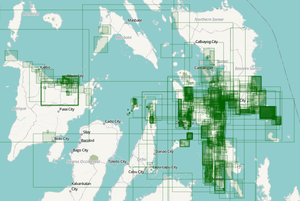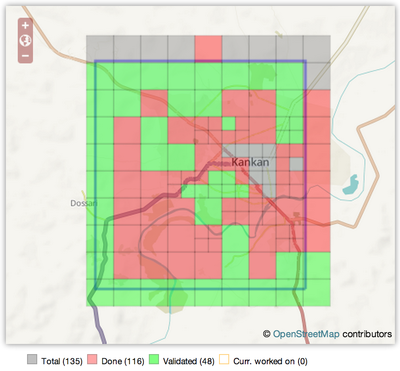User:Rmayienda/Malaria Elimination
| General Information | |
|
ELIMINATE MALARIA CAMPAIGN HOT and Digital Globe have teamed up to help Eliminate Malaria in areas in Southern Africa, Southeast Asia and Southern America in support of the Clinton Health Access Malaria Program | |
For Aid Organizations
Map and Data Services
About OpenStreetMap
OpenStreetMap offers an online map (and spatial database) which is updated by the minute. Various tools and services allow data extracts for GIS specialists, Routable Garmin GPS data, Smartphone GPS navigation, and other device-compatible downloads. With an internet connection, regular syncing is possible with open access to the community contributed data as it comes in, with OpenStreetMap's bulk data downloads ideal for use offline. In addition, maps can also be printed to paper.
Browse the (example) Activation Area to get a feel for the data that is currently available. Different map styles including an Humanitarian style can be selected on the right side, and some data may not render (appear) on the map, but could be exported from the underlying database (See export section below).
Paper Maps
Poster size Maps and normal sized paper atlases of custom areas can be printed:
- FieldPapers Paper Maps with grid for field survey or general navigation purposes,
- MapOSMatic Large Paper Maps with grid, street index and POI, good for command centers, hospitals, etc.
Exporting OpenStreetMap data
See Downloading data for instructions on getting large scale map data. See Shapefiles if you need this format to export to GIS tools.
With the availibility of Small communication devices, Navigation Offline data proves to be very useful to the humanitarians deployed in foreign countries. We support the humanitarian NGO's using navigation data and invite them to give us feedback on the utilization of these devices in the context of field deployment.
Usage of OSM data for Humanitarian Missions
For Mappers
- Example: HOT Coordinator(s) requesting remote mapping assistance for estimated 2 week mapping response
How You Can Contribute
Learn to Map
- Most of our volunteer needs are for remote OSM contributors, visit LearnOSM.org to get started.
- Add additional guidance for tagging in the DMP/Activation area here...
Mapping Priority
- Please choose from highest priority first
- Experienced mappers are also asked to participate in validating completed tasks. Information on validating can be found here
| Job No. | Priority | Location | What to map | Imagery Source | Task Mapping Status | Task Validation Status |
|---|---|---|---|---|---|---|
| ACTIVATION PROJECTS | ||||||
| Job 2563 | High | SE Province Zambia | Buildings | Bing | Complete (100%) | In Progress (1%) |
| Job 2517 | Medium | Mosu, Botswana | Buildings | Bing | Complete (100%) | Archived |
| Job 2348 | Medium | Kazungula District, Zambia | Buildings | Bing | In progress (15%) | In Progress (0%) |
| Job 2396 | Medium | NW District, Botswana | Buildings and roads | Bing | In Progress (100%) | In Progress (26%) |
Available Imagery
OSM Default Imagery Sources
Bing
Bing provides a global imagery data source that is the 'default' Imagery available for OSM (default option in most editors).
Mapbox
Mapbox provides a global imagery source and should be compared to Bing (typically use Bing for alignment if available and not instructed otherwise).
Alternative Imagery Sources
How to add/use Alternative Imagery
In many cases better imagery is available than the default; when possible we set up a remote link directly via the Tasking Manager, so there is nothing to do, the iD editor and (as long as enabled) JOSM will automatically add the imagery.
Additionally, with JOSM, it's relatively easy to add special imagery if the license is appropriate for tracing into OSM. For more details see JOSM Imagery Help


